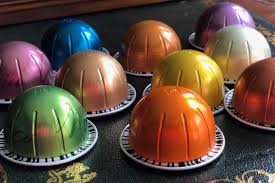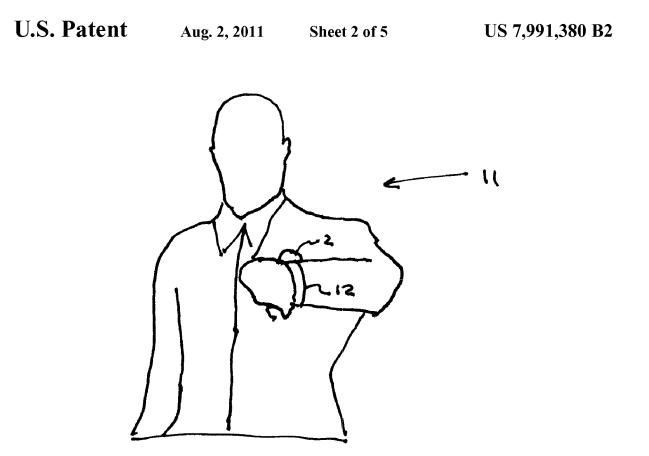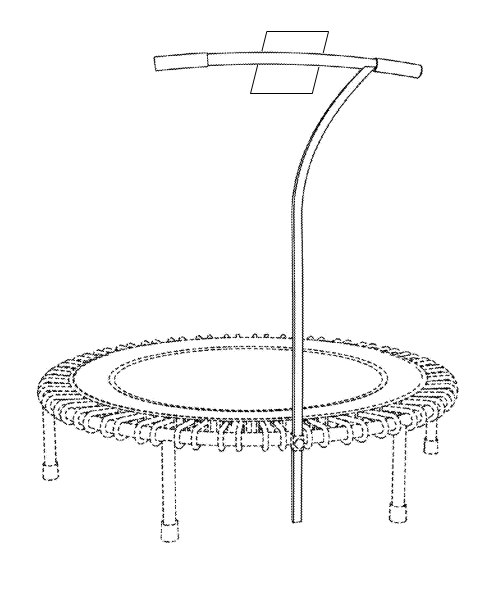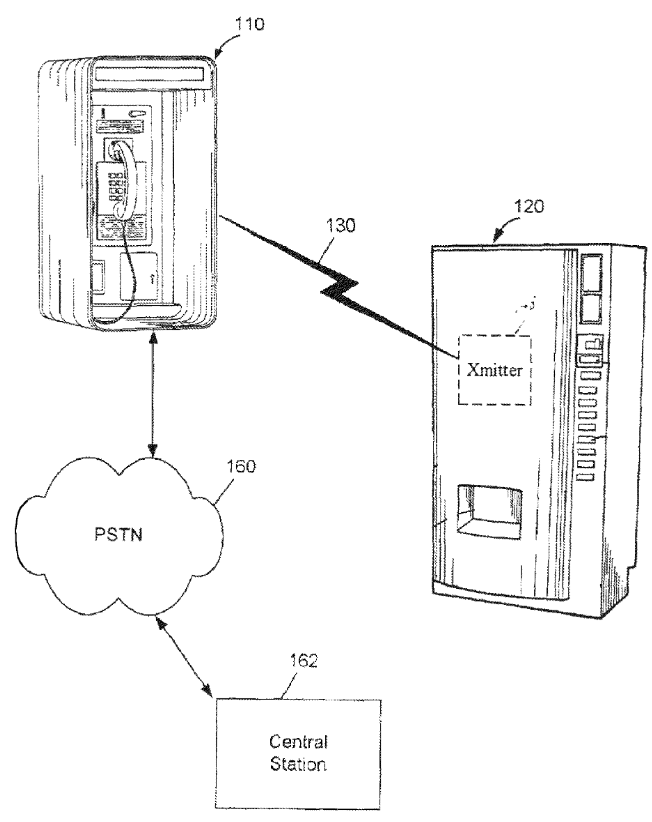In TC Heartland, the accused infringer has asked the Supreme Court to reset the law of venue and give effect to the statutory statement that infringement actions be brought either (1) “in the judicial district where the defendant resides” or (2)” where the defendant has committed acts of infringement and has a regular and established place of business.” 28 U.S.C. § 1400(b). In its 1957 Fourco decision, the Supreme Court affirmatively answered this question. However, Fourco has been undermined by subsequent Federal Circuit decisions. Thus, the question presented again is the same as what was originally asked in Fourco: “Whether 28 U.S.C. § 1400(b) is the sole and exclusive provision governing venue in patent infringement actions and is not to be supplemented by 28 U.S.C. § 1391(c).”
From a policy perspective, the case is seen as a vehicle for defendants who do not like being sued in the Eastern District of Texas and into more venues perceived as more defendant friendly.
A group of 50+ law and economics professors led by Mark Lemley, Colleen Chien, Brian Love, and Arti Rai have filed an important brief in support of the TC Heartland petition that I have copied below. Their position is (1) the Federal Circuit has erred on interpreting the law; and (2) the permissive venue result has fueled many of the problems of our patent system.
= = = = =
INTEREST OF AMICI[1]
Amici are 53 professors and researchers of law and economics at universities throughout the United States. We have no personal interest in the outcome of this case, but a professional interest in seeing patent law develop in a way that encourages innovation and creativity as efficiently as possible.
SUMMARY OF ARGUMENT
28 U.S.C. § 1400(b) provides that a defendant in a patent case may be sued where the defendant is incorporated or has a regular and established place of business and has infringed the patent. This Court made clear in Fourco Glass Co. v. Transmirra Prods. Corp., 353 U.S. 222, 223 (1957), that those were the only permissible venues for a patent case. But the Federal Circuit has rejected Fourco and the plain meaning of § 1400(b), instead permitting a patent plaintiff to file suit against a defendant anywhere there is personal jurisdiction over that defendant. The result has been rampant forum shopping, particularly by patent trolls. 44% of 2015 patent lawsuits were filed in a single district: the Eastern District of Texas, a forum with plaintiff-friendly rules and practices, and where few of the defendants are incorporated or have established places of business. And an estimated 86% of 2015 patent cases were filed somewhere other than the jurisdictions specified in the statute. Colleen V. Chien & Michael Risch, Recalibrating Patent Venue, Santa Clara Univ. Legal Studies Research Paper No. 10-1 (Sept. 1, 2016), Table 3. This Court should grant certiorari to review the meaning of 28 U.S.C. § 1400(b) because the Federal Circuit’s dubious interpretation of the statute plays an outsized and detrimental role, both legally and economically, in the patent system.
ARGUMENT
1. The Federal Circuit’s Expansive and Incorrect Interpretation of 28 U.S.C. § 1400(b) Allows Patentholders to Sue Anywhere in the Nation
Section 48 of the Judiciary Act of 1897 limited jurisdiction in patent cases to districts that the defendant inhabited or had a place of business and committed infringing acts. Act of March 3, 1897, c. 395, 29 Stat. 695. In 1942, this Court confirmed that “Congress did not intend the Act of 1897 to dovetail with the general provisions relating to the venue of civil suits, but rather that it alone should control venue in patent infringement proceedings.” Stonite Prods. Co. v. Melvin Lloyd Co., 315 U.S. 561, 563 (1942).
In 1948, Congress enacted 28 U.S.C. § 1400(b), specifying that “patent venue is proper in the judicial district where the defendant resides, or where the defendant has committed acts of infringement and has a regular and established place of business.” In 1957, this Court confirmed that patent venue should not be interpreted with reference to the general jurisdiction statute, holding that “28 U.S.C. 1400(b) . . . is the sole and exclusive provision controlling venue in patent infringement actions, and that it is not to be supplemented by the provisions of 28 U.S.C. 1391(c).” Fourco Glass Co. v. Transmirra Prods. Corp., 353 U.S. 222, 223 (1957).
In 1990, the Federal Circuit declined to apply this Court’s longstanding precedent and decided that the general venue statute should define interpretation of the patent venue statute. It made this decision on the basis of a ministerial change Congress made in 1988 to 28 U.S.C. § 1391. VE Holding Corp. v. Johnson Gas Appliance Co., 917 F.2d 1574, 1583 (Fed. Cir. 1990). That statutory language changed the wording in 28 U.S.C. § 1391, from defining residence “for venue purposes” to defining residence “for purposes of venue under this chapter.” There was no indication that Congress intended this change to impact the patent venue statute.
The Federal Circuit’s conclusion that Congress’s ministerial change overruled this Court’s longstanding precedent is incorrect for at least two reasons. First, it violates fundamental rules of statutory construction. It is well-established that Congress “does not alter the fundamental details of a regulatory scheme in vague terms or ancillary provisions—it does not, one might say, hide elephants in mouseholes.” Whitman v. American Trucking Assns., Inc., 531 U.S. 457, 468 (2001) (citing MCI Telecomm. Corp. v. American Tel. & Tel. Co., 512 U.S. 218, 231 (1994); FDA v. Brown & Williamson Tobacco Corp., 529 U.S. 120, 159-60 (2000)).
Second, the Federal Circuit’s interpretation renders the second half of § 1400(b) largely superfluous. That section provides:
Any civil action for patent infringement may be brought in the judicial district where the defendant resides, or where the defendant has committed acts of infringement and has a regular and established place of business.
The term “resides” in § 1400(b) must mean something different than having “a regular and established place of business.” Otherwise, there would have been no reason to include both provisions in the venue statute, or to link them through the disjunctive term “or.” In Brunette, this Court, interpreting 28 U.S.C. § 1400(b) as well as 28 U.S.C. § 1391(d), confirmed that where a corporation “resides” is where it is incorporated. Brunette Mach. Works v. Kockum Indus., 406 U.S. 706, n.2 (1972).
Instead of parsing § 1400(b) carefully, the Federal Circuit has chosen to read the § 1391(c)(2) definition of corporate residence for general venue purposes into the specific patent venue provision. In relevant part, § 1391(c)(2) provides that corporate defendants:
shall be deemed to reside . . . in any judicial district in which such defendant is subject to the court’s personal jurisdiction with respect to the civil action in question . . . .
For patent infringement cases, the relevant aspect of personal jurisdiction is typically specific jurisdiction, which focuses on whether the defendant’s suit-related conduct establishes a “substantial connection” with the judicial forum in question. Walden v. Fiore, 134 S.Ct. 1115, 1121 (2014). But a corporation will have established a suit-related “substantial connection” with, and thus be subject to jurisdiction in, any district in which it “has committed acts of infringement and has a regular and established place of business.” So the Federal Circuit’s decision to read the § 1391(c) definition of “resid[ing]” into § 1400(b) renders the second half of the latter section superfluous as to corporations, a category which includes virtually all patent defendants. A judicial reading that renders half of a statutory provision superfluous is strongly disfavored. United States v. Jicarilla Apache Nation, 131 S.Ct. 2313, 2330 (2011) (“‘As our cases have noted in the past, we are hesitant to adopt an interpretation of a congressional enactment which renders superfluous another portion of that same law.’” (quoting Mackey v. Lanier Collection Agency & Serv., Inc., 486 U.S. 825, 837 (1988))); Babbitt v. Sweet Home Chapter of Communities for a Great Oregon, 515 U.S. 687, 698 (1995) (noting “[a] reluctance to treat statutory terms as surplusage”).
The Federal Circuit’s expansive, and we believe incorrect, interpretation of 28 U.S.C. § 1400(b) effectively allows patent owners to file suit in any federal district where an allegedly infringing product is sold. In re TC Heartland, LLC, No. 2016-105, at 10 (Fed. Cir. Apr. 29, 2016) (holding that jurisdiction is proper in a patent suit “where a nonresident defendant purposefully shipped accused products into the forum through an established distribution channel and the cause of action for patent infringement was alleged to arise out of those activities”). The widespread availability of products over the internet means, in effect, that patentholders can bring their suits in any district in any state in the country.
2. Permissive Venue has Fueled and Enabled Forum Shopping and Selling, Patent Trolls, and Case Concentration
The Federal Circuit’s expansive interpretation of 28 U.S.C. §1400(b) has harmed the patent system in three distinct ways. It has led to forum selling and forum shopping, it has contributed to the growth of opportunistic patent litigation by patent trolls, and it has led to undue case concentration.
Patent lawyers today spend a great deal of time figuring out the best districts in which to file patent cases, and for good reason. The district in which you file your patent case has consequences for how much your case will cost, how long it will last, and whether you will prevail in court. Mark A. Lemley, Where to File Your Patent Case, 38 AIPLA Q.J. 401 (2010); Brian J. Love & James C. Yoon, Predictably Expensive: A Critical Look at Patent Litigation in the Eastern District of Texas, Stan. Tech. L. Rev. ___ (forthcoming, 2016).
The choice of venue enabled by the Federal Circuit’s liberal interpretation of the statute has created an incentive for courts to differentiate themselves in order to compete for litigants and “sell” their forum to prospective plaintiffs. See J. Jonas Anderson, Court Competition for Patent Cases, 163 U. Pa. L. Rev. 631 (2015); Daniel M. Klerman & Greg Reilly, Forum Selling, 89 S. Cal. L. Rev. 241 (2016).
Among district courts, the Eastern District of Texas is the clear forum of choice for patent plaintiffs. It has been the most popular venue for patent cases in eight of the last ten years. Chien & Risch, supra at 3. Whether intentionally or not, judges in the Eastern District of Texas have adopted rules and practices relating to case assignment, joinder, discovery, transfer, and summary judgment that attract patent plaintiffs to their district. Klerman & Reilly, supra; Matthew Sag, IP Litigation in U.S. District Courts: 1994-2014, 101 Iowa L. Rev. 1065 (2016) (detailing evidence of “forum selling” and five advantages to plaintiffs of filing suit in the Eastern District of Texas).
A study of all patent cases filed from 2014 to June 2016 quantifies some of the advantages. Love & Yoon, supra. Compared to their colleagues across the nation, judges in the Eastern District of Texas take 150 additional days on average to rule on motions to transfer, id. at 15, and are 10 percentage points less likely to stay the case in favor of an expert adjudication on the validity of the patent by Patent and Trademark Office (PTO) in inter partes review, id. at 26., despite the fact that patents asserted in the Eastern District of Texas are challenged in inter partes review more often than patents asserted in any other district. Saurabh Vishnubhakat, Arti Rai, & Jay Kesan, Strategic Decision Making in Dual PTAB and District Court Proceedings, 31 Berkeley Tech. Law J. 45, 109 (2016). At the same time, judges in the Eastern District of Texas have adopted discovery rules that begin earlier, end sooner, and require broader disclosure than just about anywhere else in the country. Love and Yoon, supra at 19-22 (comparing discovery and other pretrial deadlines applicable in the Eastern District of Texas and District of Delaware). In combination, relatively early and broad discovery requirements and relatively late rulings on motions to transfer ensure that defendants sued in the Eastern District of Texas will be forced to incur large discovery costs, regardless of the case’s connection to the venue.
However, not all types of plaintiffs choose to take advantage of the leverage that these rules and procedures make possible. Patent assertion entities (PAEs), or patent “trolls” use patents primarily to gain licensing fees rather than to commercialize or transfer technology. Colleen V. Chien, From Arms Race to Marketplace: The Complex Patent Ecosystem and Its Implications for the Patent System, 62 Hastings L.J. 297 (2010) Trolls make particular use of the advantages provided by the Federal Circuit’s permissive approach to forum shopping. Since 2014, over 90 percent of patent suits brought in the Eastern District of Texas were filed by trolls established for the purpose of litigating patent suits. Love & Yoon, supra at 9. By contrast, operating companies, individuals, and universities are more likely to sue in other districts. Chien & Risch, supra at 3-4, 40.
The troll business model explains this difference in behavior. As the FTC’s recent report describes, “litigation PAEs” sign licenses that are “less than the lower bounds of early stage litigation costs,” a finding “consistent with nuisance litigation, in which defendant companies decide to settle based on the cost of litigation rather than the likelihood of their infringement.” Federal Trade Commission, Patent Assertion Entity Activity: An FTC Study, https://www.ftc.gov/reports/patent-assertion-entity-activity-ftc-study. Rather than a decision on the merits and damages commensurate with the value of patented technology, litigation PAEs instead seek to leverage the high cost of litigation to coerce nuisance-value settlements keyed not to the merits of the lawsuit, but the cost of litigation. Mark A. Lemley & A. Douglas Melamed, Missing the Forest for the Trolls, 113 Colum. L. Rev. 2117 (2013). Further, unlike operating companies that sell products, litigation PAEs generally lack customers and regular operations and therefore have the flexibility to incorporate and file suit based solely on litigation considerations, through shell companies or otherwise.
While forum shopping in general impairs the operation of law, disadvantages those who lack the resources to engage in forum shopping, and creates economic waste, Jeanne C. Fromer, Patentography, 85 N.Y.U. L. Rev. 1444, 1464-1465 (2010), the rise of the troll business model exacerbates these problems in patent litigation, creating a particularly urgent need for the Court to hear this case. This Court has previously warned against the problems of abusive patent litigation. More than a century ago, it worried about the rise of “a class of speculative schemers who make it their business to watch the advancing wave of improvement, and gather its foam in the form of patented monopolies, which enable them to lay a heavy tax upon the industry of the country, without contributing anything to the real advancement of the arts.” Atlantic Works v. Brady, 107 U.S. 192, 200 (1883). And in Commil v. Cisco, this Court said:
The Court is well aware that an “industry has developed in which firms use patents not as a basis for producing and selling goods but, instead, primarily for obtaining licensing fees.” eBay Inc. v. MercExchange, L. L. C., 547 U. S. 388, 396 (2006) (KENNEDY, J., concurring). Some companies may use patents as a sword to go after defendants for money, even when their claims are frivolous.
576 U.S. __, 135 S.Ct. 1920 (2015).
Because troll suits now dominate patent litigation nationwide, their filing patterns have led to an overall concentration of 44% of all patent cases in the Eastern District of Texas in 2015. Among cases initiated 2014 through 2016, one U.S. District Judge on the Eastern District of Texas—Judge Rodney Gilstrap of Marshall, Texas—was assigned almost one quarter of all patent case filings nationwide, more than the total number of patent cases assigned to all federal judges in California, New York, and Florida combined.[2]
This level of concentration is a problem for the legal system whatever one thinks of the decisions of the Eastern District of Texas and regardless of how fair and capable the judges there are. Simply from a logistical standpoint, the current caseload in the Eastern District of Texas is problematic. If even 10 percent of the 1,686 patent cases assigned to Judge Gilstrap in 2015 go to trial, he will need to preside over three to four patent trials per week every week for an entire year to avoid creating a backlog.
Further, when Congress decided to consolidate patent appeals in the newly-created United States Court of Appeals for the Federal Circuit, it deliberately chose to include both appeals from the United States Patent and Trademark Office and the district courts, so the new court would not hear only appeals from patent owners. And it considered and rejected proposals to create a specialized district court to hear patent cases. But the Federal Circuit’s interpretation of § 1400(b) has in practice created just such a court.
The current distribution of patent litigation filings is the result of strategic behavior by a specific type of patent enforcer, not an artifact of proximity to the original locus of invention or alleged infringement. Forum-shopping plaintiffs will naturally gravitate towards whatever district seems to have the most favorable rules. The effect of the Federal Circuit’s decision to expand patent venue beyond the scope of the statute and this Court’s decisions has been to create a de-facto specialized patent trial court, one chosen by litigants on one side rather than by Congress.
CONCLUSION
The Federal Circuit’s permissive venue rule has fundamentally shaped the landscape of patent litigation in ways that harm the patent system, by enabling extensive forum shopping and forum selling, supporting opportunistic patent litigation by patent trolls, and creating undue case concentration. This Court should grant certiorari in order to curb abuse of venue based on its misinterpretation of § 1400(b).
= = = = =
[1] No person other than the amici and their counsel participated in the writing of this brief or made a financial contribution to the brief. Letters signifying the parties’ consent to the filing of this brief are on file with the Court.
[2] According to Lex Machina, between January 1, 2014 and June 30, 2016 Judge Gilstrap was assigned 3,166 new patent suits, more than the combined total of all district courts in California, Florida, and New York: 2,656. Love & Yoon, supra, at 5 (collecting these statistics).
= = = = =
Signed, Professor John R. Allison (Texas); Professor Margo Bagley (Emory); Professor James Bessen (BU); Professor Jeremy Bock (Memphis); Professor Daniel H. Brean (Akron); Professor Michael A. Carrier (Rutgers); Professor Michael W. Carroll (American); Professor Bernard Chao (Denver); Professor Tun-Jen Chiang (George Mason); Professor Colleen V. Chien (Santa Clara); Professor Andrew Chin (UNC); Professor Robert Cook-Deegan (ASU); Professor Rochelle Dreyfuss (NYU); Dr. Dieter Ernst (Honolulu); Professor Robin C. Feldman (Hastings); Professor Lee Fleming (Berkeley); Professor Brian Frye (Kentucky); Professor William Gallagher (Golden Gate); Professor Shubha Ghosh (Wisconsin); Professor Eric Goldman (Santa Clara); Professor Bronwyn H. Hall (Berkeley); Professor Yaniv Heled (Georgia State); Professor Christian Helmers (Santa Clara); Professor Joachim Henkel (Technische Universität München); Professor Susan Helper (CWRU); Professor Tim Holbrook (Emory); Professor Herbert Hovenkamp (Iowa); Professor William Hubbard (Baltimore); Dr. Xavier Jaravel (Stanford); Professor Dennis S. Karjala (ASU); Professor Peter Lee (UC Davis); Professor Mark A. Lemley (Stanford); Professor David K. Levine (WashU); Professor David S. Levine (Elon); Professor Doug Lichtman (UCLA); Professor Yvette Joy Liebesman (SLU); Professor Orly Lobel (USD); Professor Brian Love (Santa Clara); Professor Phil Malone (Stanford); Professor Michael J. Meurer (BU); Dr. Shawn Miller (Stanford); Professor Matthew Mitchell (Toronto); Professor Susan Barbieri Montgomery (Northeastern); Professor Sean Pager (Michigan State); Professor Arti K. Rai (Duke); Professor Jacob H. Rooksby (Duquesne); Professor Jorge R. Roig (Charleston); Professor Matthew Sag (Loyola Chicago); Professor Pamela Samuelson (Berkeley); Ana Santos Rutschman (DePaul); Professor Lea Bishop Shaver (Indiana); Professor John L. Turner (Georgia); Professor Jennifer Urban (Berkeley); Professor Eric von Hippel (MIT).



